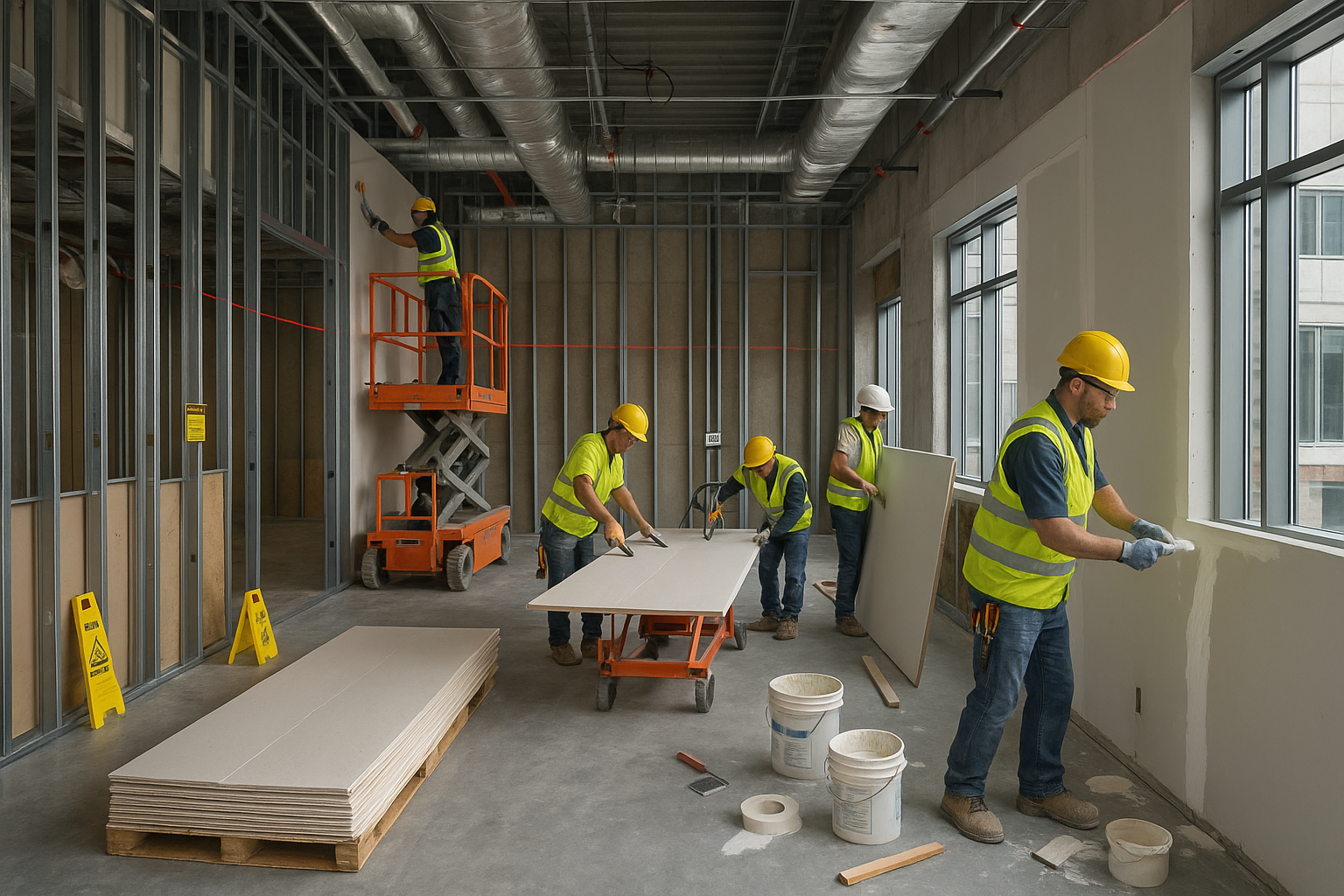
Drywall estimating is not just about square footage—it’s about understanding the full scope of the project and accurately accounting for every relevant detail. For architects, engineers, and general contractors, ensuring a complete and precise drywall estimate can mean the difference between a profitable project and a costly one. Missing even a few key items can lead to budget overruns, schedule delays, and strained relationships. Here are ten critical elements that should be included in every drywall estimate to avoid those risks.
Begin with a detailed breakdown of all wall types—interior partitions, exterior walls, shaft walls, etc. Each has different requirements in terms of material type, installation methods, and labor hours.
Furring out around mechanical or structural elements and installing backing for fixtures or equipment often goes overlooked. These should be itemized as separate line items due to their unique labor needs.
Corner details, if missed, will later require a change order or eat into margins.
Fasteners, adhesives, joint compound, and other installation accessories can quickly add up. A good estimate will base these on standard usage rates and material requirements.
Multi-story buildings or rooms with high ceilings demand lift equipment and additional setup time. Estimators must factor in staging needs, scaffold time, and man-hour adjustments.
Fire-rated systems impact both materials and time, making them a critical cost component.
Wet zones, kitchens, or healthcare environments may call for moisture-resistant or impact-resistant board types. These should be separated from standard drywall line items due to differing costs.
Estimators should apply real-world production rates based on past performance or vendor data. With Active Estimating, teams can model labor productivity more precisely using both historical benchmarks and field feedback loops.
Every drywall job contains unknowns. A contingency line item, along with subjective allowances for visual conditions or evolving design decisions, can save projects from surprise overages.
Tools like drywall estimating platforms streamline the inclusion of these items, reduce oversight, and improve auditability. Estimators can build assemblies, tag subjective conditions, and visualize each item’s impact on cost and schedule with minimal effort.
A robust drywall estimate is more than just a takeoff—it's a risk management tool. Including these top 10 must-have elements ensures your estimate reflects real-world conditions, aligns with project expectations, and avoids costly gaps. Estimators who use structured tools and adopt a comprehensive checklist approach will consistently outperform in both accuracy and accountability.
Contact Information:
Active Estimating
508 2nd Street, Suite 208
Davis
California
95616
Rich Schoener
richard@activeestimating.com
(877)
Schedule a personalized demo to see how Active Estimating can work for your specific needs.
